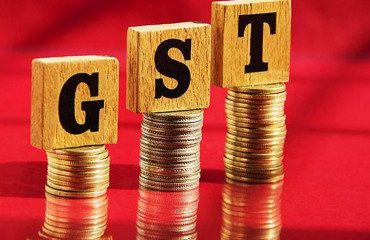
New Jobs, New Skills
One of the biggest priorities the Survey identifies is job creation, for both new workforce entrants and those leaving agriculture. It forecasts a need to create 7.8-8.1 million jobs a year, or about 103 million jobs by 2036 (Chart 1a).
New Jobs, New Skills
One of the biggest priorities the Survey identifies is job creation, for both new workforce entrants and those leaving agriculture. It forecasts a need to create 7.8-8.1 million jobs a year, or about 103 million jobs by 2036 (Chart 1a).
Additionally, focus has to be on skills that make the youth employable. Data shows that only 1 in 2 youth out of college are employable directly. In this context, the Survey notes an across-the-board jump in the share of youth aged 15-24 years who have received formal vocational education. However, this share remains in low single-digits, though youth who have received such training from informal sources comprise an additional 16.6% (Chart 1b).
Agricultural Alternatives
Increasing productivity in agriculture is critical to improve livelihoods. The Survey emphasizes the need to move to high-value agriculture such as fruits and vegetables, dairy and animal husbandry. Between 2014-15 and 2022-23, the livestock sector grew at a compound rate of 7.4% per annum, boosting production of milk, eggs and fish (Chart 2a).
Another thrust area identified by the Survey is food processing, which grew at a compound rate of 5.4% in this period, though with swings. The sector is a major employer and exporter. "It is an important industry because it has strong linkages with the agriculture sector and can employ surplus workforce released from the agriculture sector," says the Survey (Chart 2b).
Supporting SMEs
Small and medium enterprises (SMEs) account for close to three-fourths of non-agricultural employment. Any plan for economic revival and job creation has to focus on ensuring the health of the sector. Schemes such as the Credit Guarantee Fund Trust for SMEs aims to enable greater credit flow to the sector by offering collateral free loans of up to ₹5 crore "with a guaranteed coverage of up to 85%" (Charts 3a, 3b).
However, major shocks over the last decade such as the transition to the goods and services tax (GST), demonetisation and covid have seriously affected the sector. The survey calls for ensuring MSMEs are bankable, a focus on employment-intensive MSME sectors, a collaboration between government, industry and academia to increase skills in the labour force, and providing faster clearances to MSME.
Kickstarting Private Investment
When the Indian economy was growing in excess of 8% between 2003 and 2012, private investment—setting up of new capacity by Indian companies—was one of the driving forces. It, however, declined from 27% of GDP in 2011-12 to 20.7% in 2020-21. Private corporate investments remain critical for India's growth story, and it has shown signs of revival in the last two years (Chart 4a and 4b).
However, household savings—which provide funds for private investments to take place—shrunk from 23.6% of GDP in 2011-12 to 18.4% of GDP in 2022-23. Even lately, as private investment has recovered, household savings continues to decline. The question now is will there be enough savings to fuel growth through private investment?
Firing Up Trade
Foreign trade will be an important pillar of India's growth story. In China's high-octane growth earlier this century, exports were a critical piece to make it a factory to the world. The world was a much open place for trade then. As India tries to create its own growth streak, the world is turning relatively insular, the Survey points out.
The share of global imports impacted by protectionist measures put in place across the world increased from 3.7% in 2015 to 9.4% in 2022 (Chart 5a). As it is, India's goods exports declined in 2023-24, as developed countries like the US consumed less. As India looks to crank up its goods exports, with the Survey showcasing successes in toys, defence and smartphones, a silver lining is that during October 2022 and October 2023, countries resorted to fewer interventions (Chart 5b).
Green Transitions
India's economic growth is going to coincide with a need and clamour across the world to reduce emissions of greenhouse gases. India's ambitious target of achieving 'net-zero'—where its emissions are counter-balanced by measures that remove those gases—by 2070 would require an investment of $10.1 trillion in three sectors, namely power, mobility and industrial (Chart 6a).
Traditional sources of financing like banks can meet only around two-thirds of the investment required. The government has to finance $8 billion every year till 2030 to bridge the funding gap (Chart 6b). A substantial portion of that gap (40%) has to be filled by overseas concessional finance. A study commissioned by India's central bank estimates green financing at 2.5% of GDP till 2030. India has committed to reduce greenhouse gas emissions by 33-35% from 2005 levels by 2030.
